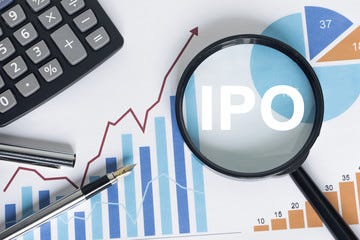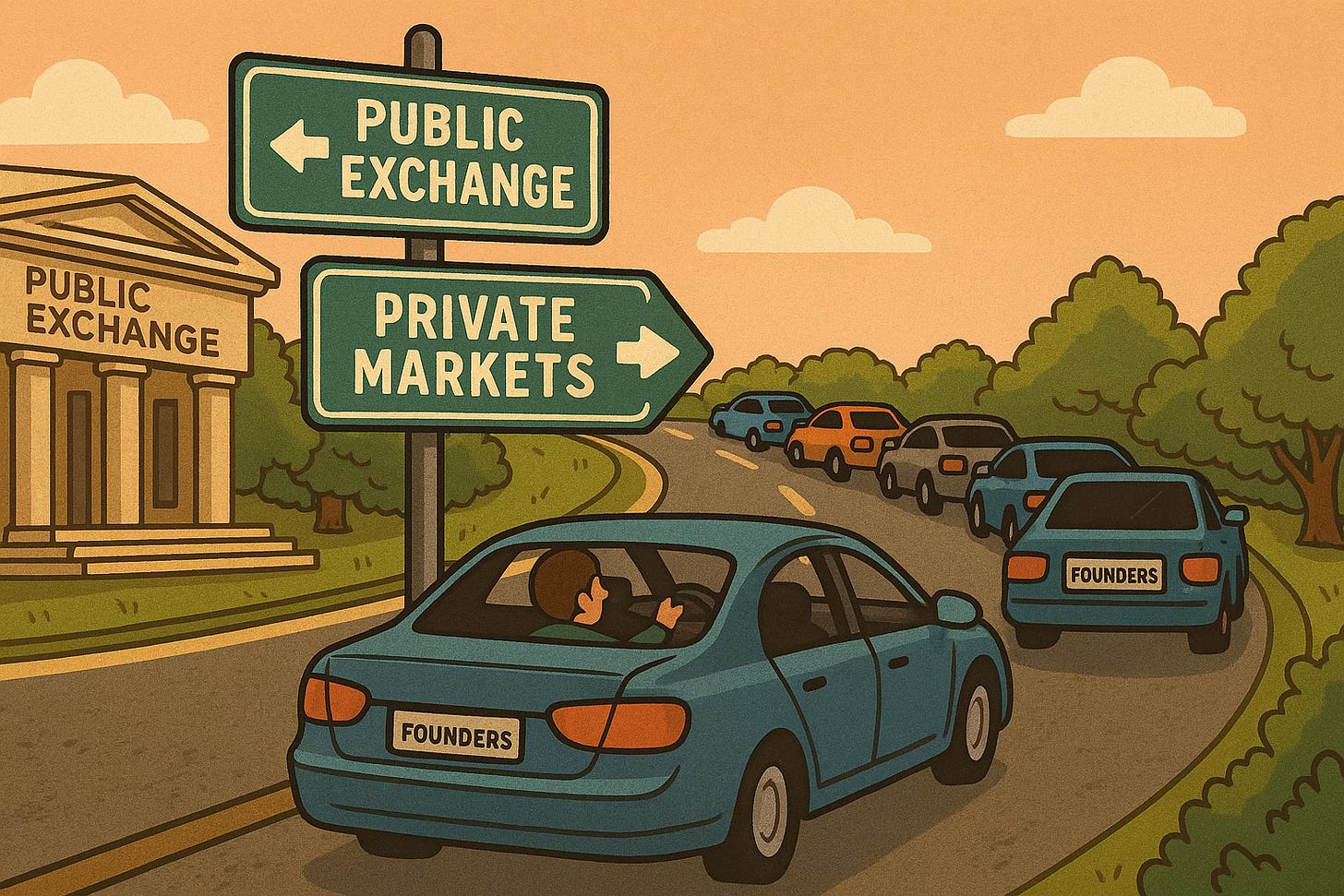“The Death of the IPO” – Why Startups Are Ghosting the Stock Market
Welcome back to Notawhitepaper, where business news gets demystified, jargon gets thrown out, and you walk away smarter without needing a finance degree.
Something strange is happening in the world of startups. The once-celebrated IPO, that flashy public debut that used to mark a company’s arrival, is now being quietly avoided. Instead of ringing the opening bell, today’s tech darlings are staying private longer, raising billions behind closed doors, and dodging the scrutiny that accompanies going public.
This is not just a temporary slump; it is a fundamental shift in how capital flows, who gets access to growth, and what it means to build a business in 2025. From Wall Street to Bay Street to Reforma, the public market is starting to look less like a gateway to greatness and more like a relic of a different era.
Chapter 1: What Is an IPO?
IPO is the acronym for Initial Public Offering. It is when a private company sells its shares to the public for the first time by listing on a stock exchange. It is a company’s way of saying, “We’re ready for the big leagues, and anyone can now invest in us.”
The goal is to raise money, reward early investors, and gain public credibility. But going public also means giving up a lot of control because there are now other owners called shareholders. Going public also involves facing intense scrutiny and being forced to hit quarterly earnings targets like clockwork or face a drop in share prices.
For many startups today, it feels more like a trap than a trophy. Historically, companies would typically go public after 5-7 years of operation. Today, the average age at IPO has doubled to 10-12 years.
Chapter 2: The Collapse of the IPO —What the Numbers Tell Us
Back in 2021, IPOs were everywhere. Over 1,000 companies went public in the United States that year, raising over $316 billion. It was a record-breaking wave.
Then it all fell apart. In 2022, U.S. IPOs dropped to 181, with only $24 billion raised. By 2023, that number sank again to 153 IPOs, pulling in just $19 billion. In 2024, 176 companies went public in the U.S., and the total capital raised was around $33 billion.
Canada has followed the same trend. In 2021, Canada recorded about 171 IPOs, including a few tech names like Thinkific. But by 2022, only 42 companies were listed on Canadian exchanges. In 2023, that went up slightly to 51. In 2024, only eleven companies went public in Canada, and none were in tech.
Mexico’s stock exchange, the BMV (Bolsa Mexicana de Valores), has been quieter. From 2020 to 2024, there have been only 12 IPOs. The number of publicly traded companies on the BMV is now below 140, and that number continues to shrink
Chapter 3: Why Startups Are Skipping the Public Stage
The first reason is rising interest rates. Interest rates are the cost of borrowing money. For years, central banks kept them low to encourage spending and investment. But starting in 2022, inflation forced them to hike those rates fast. The U.S. Federal Reserve raised rates to 5.25 percent, the Bank of Canada hit 5 percent, and Banxico in Mexico climbed all the way to 11.25 percent.
When money becomes more expensive, risky bets become less attractive. Investors started asking hard questions about profit instead of just betting on potential.
The second reason is the painful adjustment in valuations. A company’s valuation is what investors believe it is worth. In private markets, these numbers can get inflated because there are fewer rules and more optimism. In public markets, the truth comes out, and the market is ruthless.
Take a look at what happened after some recent IPOs. Instacart went public in 2023 at $30 per share and now trades closer to $23. Reddit listed in early 2024 at $34 and currently sits around $29. Klaviyo started at $30 and is now around $22. Birkenstock launched at $46 and has dipped under $40. The only real winner has been ARM Holdings, which IPO’d at $51 in 2023 and now trades at around $140. But that’s a rare exception in today’s world.
The third reason is that private funding is still available. Venture capitalists and private equity firms continue to pour money into late-stage startups. These companies can raise hundreds of millions of dollars without the stress of public reporting or market volatility. For many founders, it is an easy decision to stay private.
Chapter 4: Canada and Mexico are Missing in Action
Since Shopify’s successful debut in 2015, no other tech company has come close. Thinkific, which went public in 2021 at $13.50, is now trading under $2. That result scared off many others. Companies like Wealthsimple, Clearco, and Ada have chosen to stay private, and will most likely remain so for the foreseeable future. Even Canadian institutional investors are shifting their attention to U.S.-based private companies instead of backing local listings.
Mexico’s IPO market is even worse. Unicorns like Kavak, Clip, and Bitso have reached billion-dollar valuations but continue to raise capital from U.S. and European investors. Listing on the BMV is seen as too slow, highly bureaucratic, and often illiquid – all characteristics of an inefficient market. In a reversal of the IPO trend of earlier years, some Mexican companies have started delisting.
Chapter 5: So How Are Startups Getting Out?
With IPOs off the table, most startups choose one of three options.
The first is acquisition. Larger companies, especially in the U.S., are snapping up startups in Canada and Mexico before they reach the public stage. Amazon is aggressively expanding into Latin America, and Shopify continues to absorb smaller software companies. Canada and Mexico are starting to feel like talent farms for U.S. tech giants.
The second option is selling to private equity. Firms like Brookfield, OMERS, and KKR are happy to acquire companies outright. These deals are fast, private, and don’t require public disclosures or investor roadshows.
The third option has become increasingly viable for today's most valuable companies. Industry leaders like SpaceX, Stripe and OpenAI demonstrate this shift. These firms have achieved massive scale and influence while avoiding public markets entirely. After 20 years as a private company, SpaceX commands a staggering $180 billion valuation. Stripe remains private after 13 years with a $65 billion valuation. OpenAI operates with an $86 billion valuation without pursuing an IPO.
These examples prove that companies can reach extraordinary size, profitability, and market power outside the traditional public exchange system. Just a decade ago, this reality would have been nearly unthinkable.
Chapter 6: Why This Actually Matters
This shift away from IPOs isn’t just a story for tech founders and bankers. It affects everyone.
Retail investors (regular people) are being locked out of the growth phase of modern companies. The public markets are losing relevance and energy. If the only companies going public are mining firms and legacy brands, building diversified, forward-looking portfolios becomes harder.
The risk is even greater for countries like Canada and Mexico. If they can’t build strong public markets that attract tech companies, they’ll keep losing talent, capital, and control to more established countries, specifically the U.S.
The Verdict
IPOs aren’t extinct, but they are certainly out of favor. Startups no longer see them as a goal; they see them as a burden. High interest rates, fragile valuations, and better private alternatives have turned the public market from a dream into a chore.
I hope you enjoyed reading Notawhitepaper.Subscribe for more insights on tech, money, and why the markets are doing what they’re doing!







